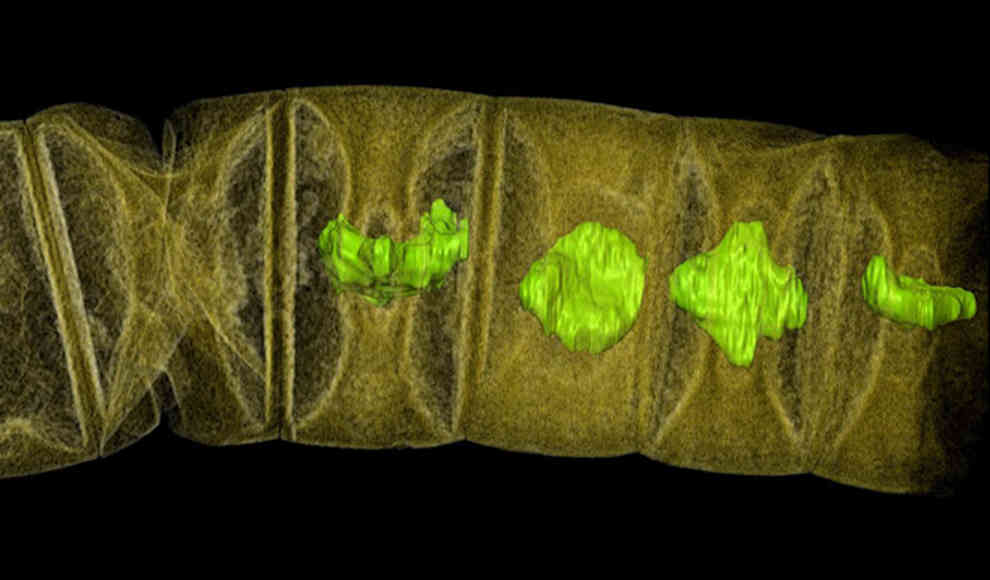Indian scientists have made a groundbreaking discovery in Indian limestone: 1.6 billion-year-old plant fossils. This discovery provides evidence that multicellular life existed much earlier than previously thought. The fossils were found in the Chitrakoot district of central India and were analyzed using microtomography, a technique that produces high-resolution X-ray images. The cells of the fossilized plant suggest that it is a red algae, although the scientists caution that this identification is not yet 100% certain. Regardless of the exact species, this discovery is the oldest evidence of multicellular life on Earth.
The oldest evidence of life on Earth is over 3.5 billion years old, but it consists only of single-celled organisms. Multicellular life, which is much more complex, did not emerge until much later. However, Indian scientists have now found evidence that multicellular life existed at least 1.6 billion years ago, much earlier than previously thought. The fossils were found in Indian limestone in the Chitrakoot district, and were analyzed using microtomography, a technique that produces high-resolution X-ray images. The cells of the fossilized plant suggest that it is a red algae, although the scientists caution that this identification is not yet 100% certain. Regardless of the exact species, this discovery is the oldest evidence of multicellular life on Earth.
Stefan Bengtson, a co-author of the study and a researcher at the Swedish Museum of Natural History, notes that the cell structure and membrane position of the analyzed cells are extremely similar to those of red algae. However, the scientists caution that the identification of the fossil as a red algae is not yet certain. Regardless of the exact species, this discovery is a major breakthrough in our understanding of the history of life on Earth.










